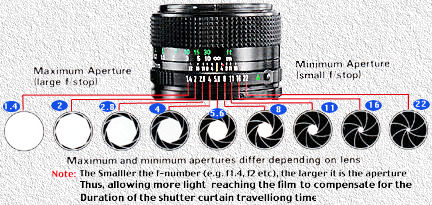
ISO: Also referred to as ISO Settings or ISO Sensitivity. The acronym stands for International Organization for Standardization, an organization that sets a lot of standards like, the measurement for film sensitivity (yes, this translates to digital photography). ISO setting determines how sensitive the image sensor is to the amount of light present.The higher the ISO setting, the more sensitive the image, which makes it possible to take photos in low-light situations.
ISO Noise: Similar to the "grainness" you might see in a film, it is made up of coloured dots on your photo. Increased sensitivity (higher ISO) allows the recording of more light and more noise.
ISO Speed and Exposure: Affects the shutter speed and aperture combinations you can use to get correct exposure. Examples include, using a higher ISO when your camera's light meter warns that there's not enough light to expose a shot correctly and you're not allowed to use your flash (i.e. in a concert) OR if the shutter speed is too slow (1/60 sec. and slower) to hold the camera steady by hand, use the next higher ISO, which will allow the selection of a faster shutter speed.
Shutter: The device that allows a specified amount of light to expose a photograph for a set amount of time, by opening and closing.
Shutter Speed: The amount of time the camera's shutter is open; it controls the amount of time light reaches the film. Short shutter speeds are good for action and sunny-day photos whereas slow shutter speeds are good for low-light conditions.
No comments:
Post a Comment